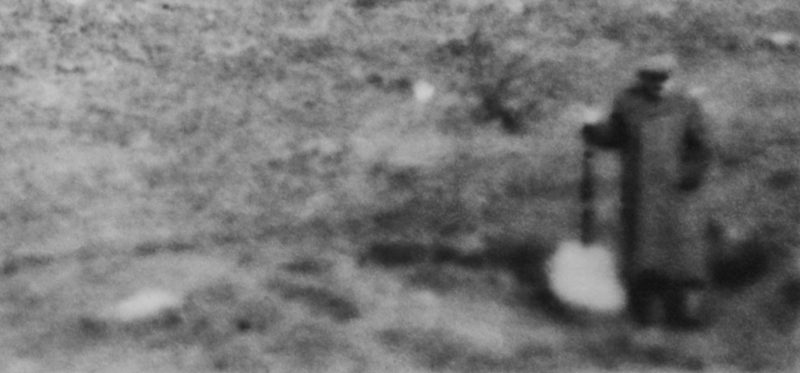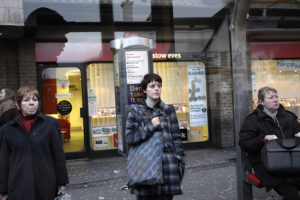Once or twice every year, I get invited to give a talk at a photography festival or university. Given there is no need to repeat what already exists online (in the form of this site), I usually discuss the state of photography today, focusing on the larger picture. After all, photography has become a medium very widely used, and there are a lot of interesting developments outside the often somewhat narrow confines of contemporary art photography. As might be extremely obvious, my presentations rely on showing photographs, many of them picked based on there being some sort of discussion around them at some stage. Discussions (or controversies) offer a chance to learn something.
One of the things I simply did not expect is that many of the photographs, which might just be a few years old, end up being new to the audiences. They either haven’t seen them before, or they cannot remember them. This would be easily understandable if I only picked obscure photographs, but I try not to do that. After all, part of the idea behind me discussing (supposedly) well-known photographs is to make new connections.
So there’s something interesting going on here. There is the idea of a flood of photographs, a relentless onslaught of images produced by all of us that we have trouble dealing with. David Campbell has been making the case that this idea is flawed, giving three reasons: first, “it renders image consumers as passive victims of a force of nature […] But image consumption is not a natural process. It involves a series of conscious decisions […] Secondly, focusing on the macro level […] hides the much smaller number of images per person. […] Finally […] While there are billions of photographs online, we do NOT actually have access to all of them all of the time. You have to decide to follow people on Instagram and then you have to decide to look.” There’s very little, if anything, to disagree with here.
You can also play a numbers game, and the vast total number of photographs produced each year dwindles down quite a bit. Campbell proposes to replace the metaphor of an image flood with that of a reservoir, the idea being that while there might be a lot of photographs, they’re not merely rushing by. Instead, they can be accessed, in whatever way, in a conscious manner. This seems like a more apt way to approach the issue.
But regardless of whether you accept the idea of a flood of images or of a reservoir that leaves you in more control, why are so many photographs hotly debated one day essentially forgotten the next (or maybe a year later)? What does that tell us? I have no actual proof that the theory of shortened attention spans is correct, and in any case it just seems a tad too simplistic and convenient to tell us much. There has got to be something else going on.
An alternative explanation would be that many of the photographs that are so hotly debated or so widely shared today simply aren’t memorable in the long run. That, again, is a bit of a convenient explanation, especially if you’re of the grouchy kind, lamenting the loss of all that photography (supposedly) had to offer in the past. It does, however, place the onus on the photographs, and not their viewers, and for that reason I am tempted to think it might offer a better way to understand how we – collectively – are dealing with all the photographs we are either making and/or sharing and/or looking at.
After all, however many (or few) photographs we end up looking at every week, they all compete for our attention. Unless you have a very good visual memory, it’s unlikely you will remember them all. Instead, there might only be that one, or maybe two, or none at all. On top of that, even if your attention span is in fact very short, what makes photography different is its instant impact. Unlike a piece of writing that requires a prolonged investment of attention, a photographs reveals itself instantly.
Given we don’t seem to remember that many photographs, especially compared to the numbers we consume on a daily basis, the idea that most photographs aren’t memorable looks sound. And, of course, your “memorable” might be quite different than mine. This would turn Campbell’s reservoir of photographs into something that resembles the Dead Sea: photographs are made (and possibly shared and looked at), but they are then essentially forgotten – as if they had in fact never existed.
A few years ago, I wrote about photographing a car on fire at a mall, concluding that the “pictures, it turns out, actually don’t always matter much – if at all. Photography might be a creative expression of the human mind, but often it is something else entirely. It might appear to be inconsequential, but it’s a statement made by the photographer, affirming her or his presence: I photograph, therefore I am.” Following this, the relevance of taking photographs would lie entirely in the process of making them. And the pictures truly don’t matter much: we can easily forget them, given they are just a spin off in this process.
Seen that way, the regular eruptions of outrage over people taking selfies in what appear to be inappropriate situations is entirely misguided: those selfies aren’t taken because their makers don’t care. It’s actually the other way around. People take selfies in such situations because they not only are there, but especially because they are affected enough to trigger the desire to affirm their presence. And the picture then gets added to the Dead Sea (with maybe a little extra life provided by some rabid newspaper or website that needs some quick outrage for clicks or sales).
The idea of the Dead Sea of photographs appears to solve one of the main problems many photographer appear to face. Given everything has been photographed already, the sentiment goes, what point is there in trying to make new work? Well, the point really is quite simple: make photographs that are memorable, photos that are that creative expression of the human mind. Not only is that not very easy at all, making it a very worthwhile endeavour, it also removes some of the self-indulgence behind so many of those complaints often heard from professional photographers.
But the Dead Sea of photographs is not just a global phenomenon, it’s also a very personal one. We all have hundreds, possibly thousands of photographs on hard drives, or somewhere in galleries on websites like Instagram or Facebook. Many of them are indeed the end result of that process of self-affirmation that I spoke of earlier. They get shared, looked at by the select few people who follow one’s feeds, “liked,” and then what? How many of those photographs will get revisited, looked at again? Do we revisit our own archives?
In the past, the process existed in a modified form, the sharing aspect removed (or rather, a bit more complicated). One would photograph, take the film to a lab, get prints, and often enough some, but not all, of those prints would end up in some sort of photo album. There are all kinds of ways one can think about photo albums, whether as a form of memory itself or as a way to support one’s memory.
Regardless of how you want to understand physical albums, it seems obvious that their digital equivalents don’t serve the same purpose at all. The aspect of selection usually is absent (or it is being replaced by a process of selection that is not aimed at oneself, but rather at those who might look at the photographs: Facebook albums are essentially a form of personal propaganda), and you simply don’t engage with a digital album in the same way as with a physical one.
What, then, has become of the kind of photographic memory we started to assemble once photography started to become a democratic medium? It would seem it’s gone. What does this tell us about how we view ourselves? How will we engage with our own past if we cannot open an album any longer, to gladly or wistfully look at those moments we deemed worthwhile remembering?
What are we going to get from staring into our own Dead Sea?












